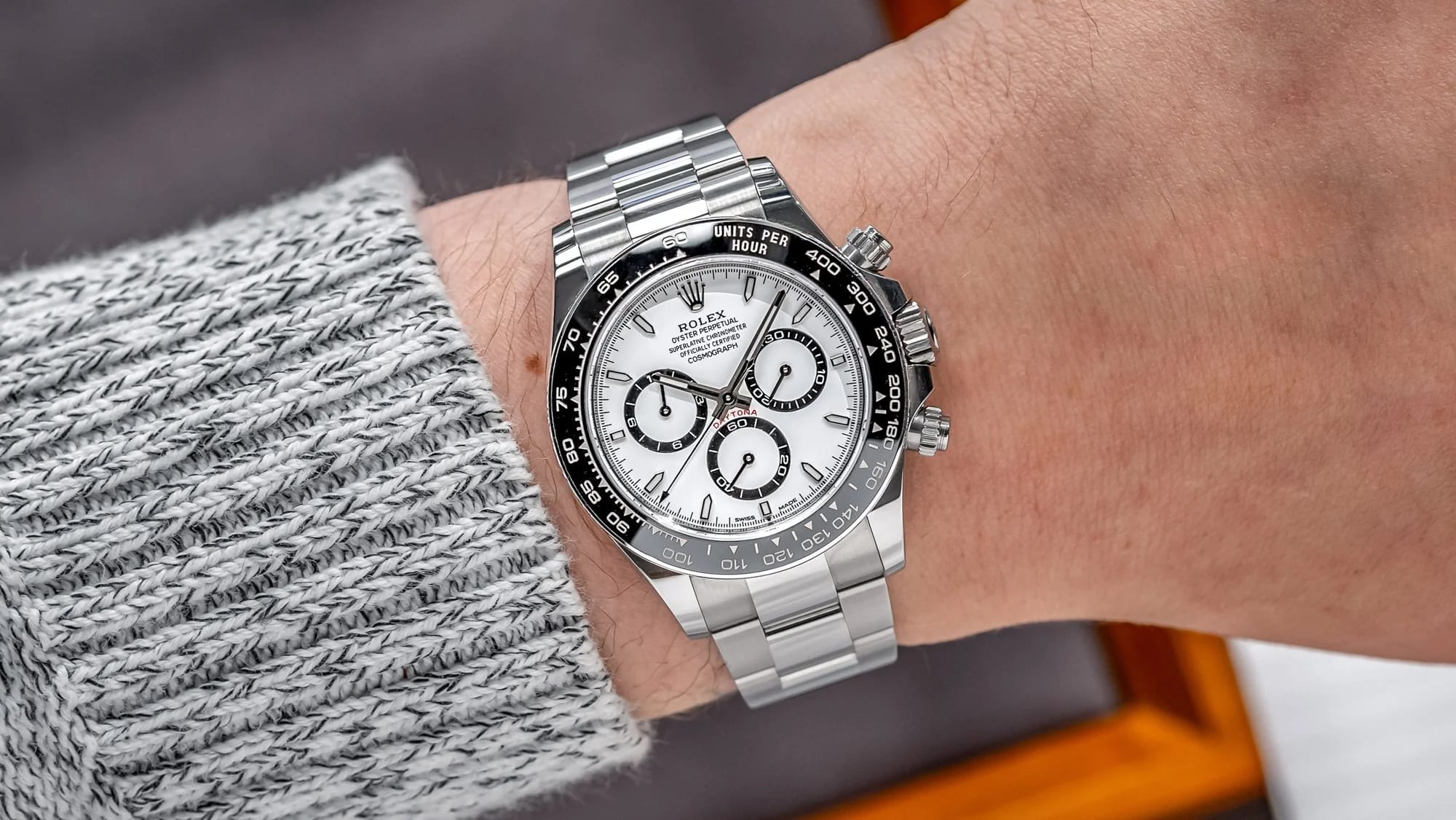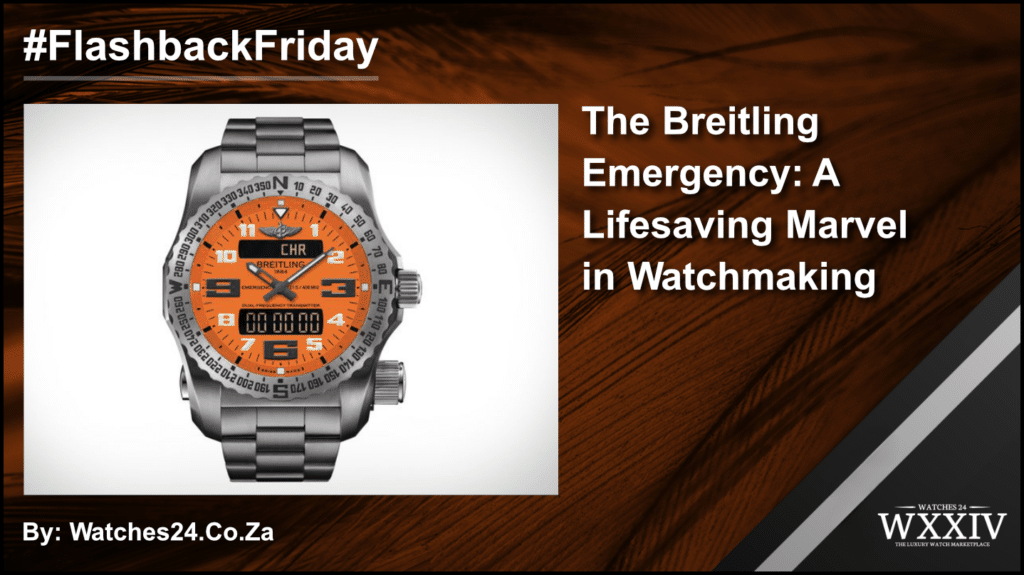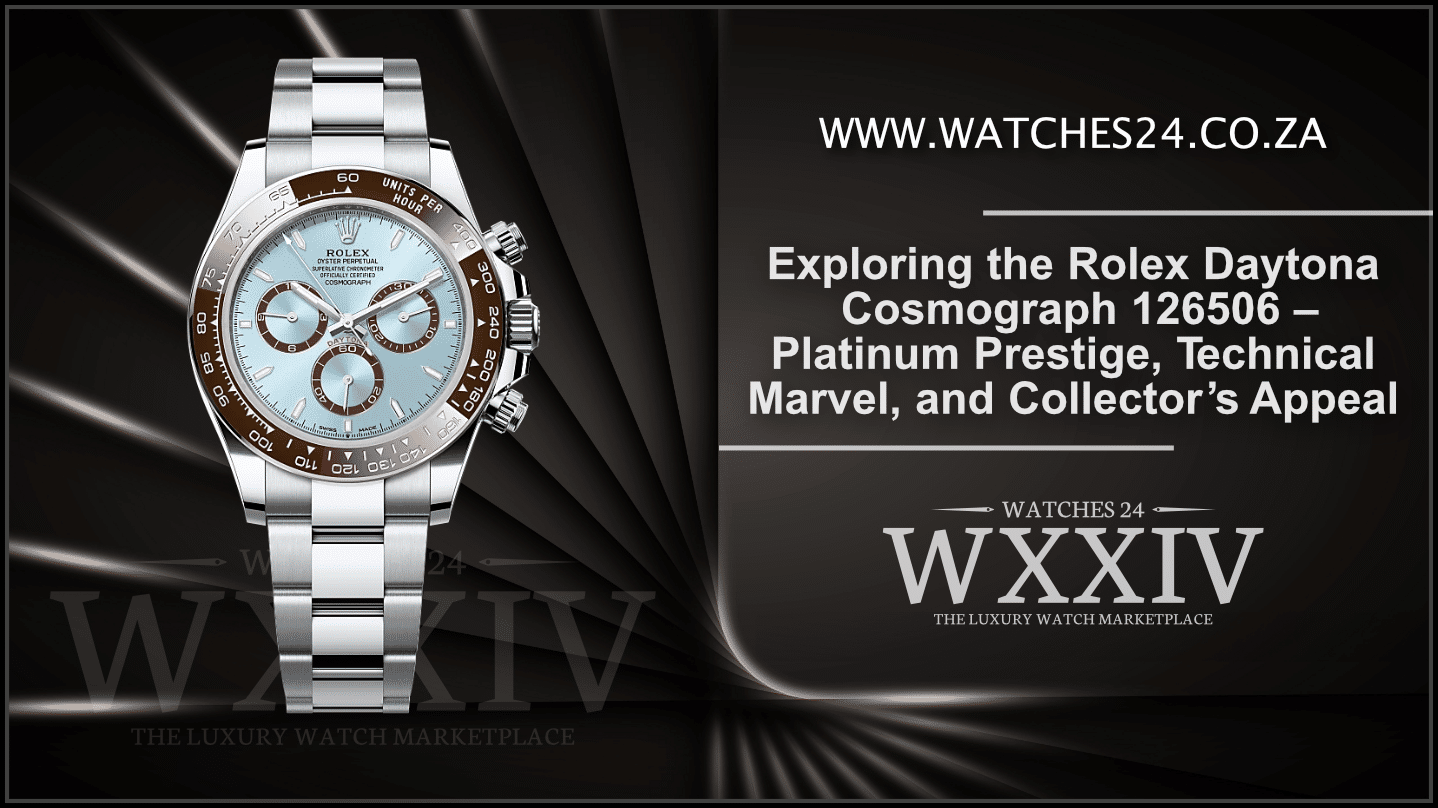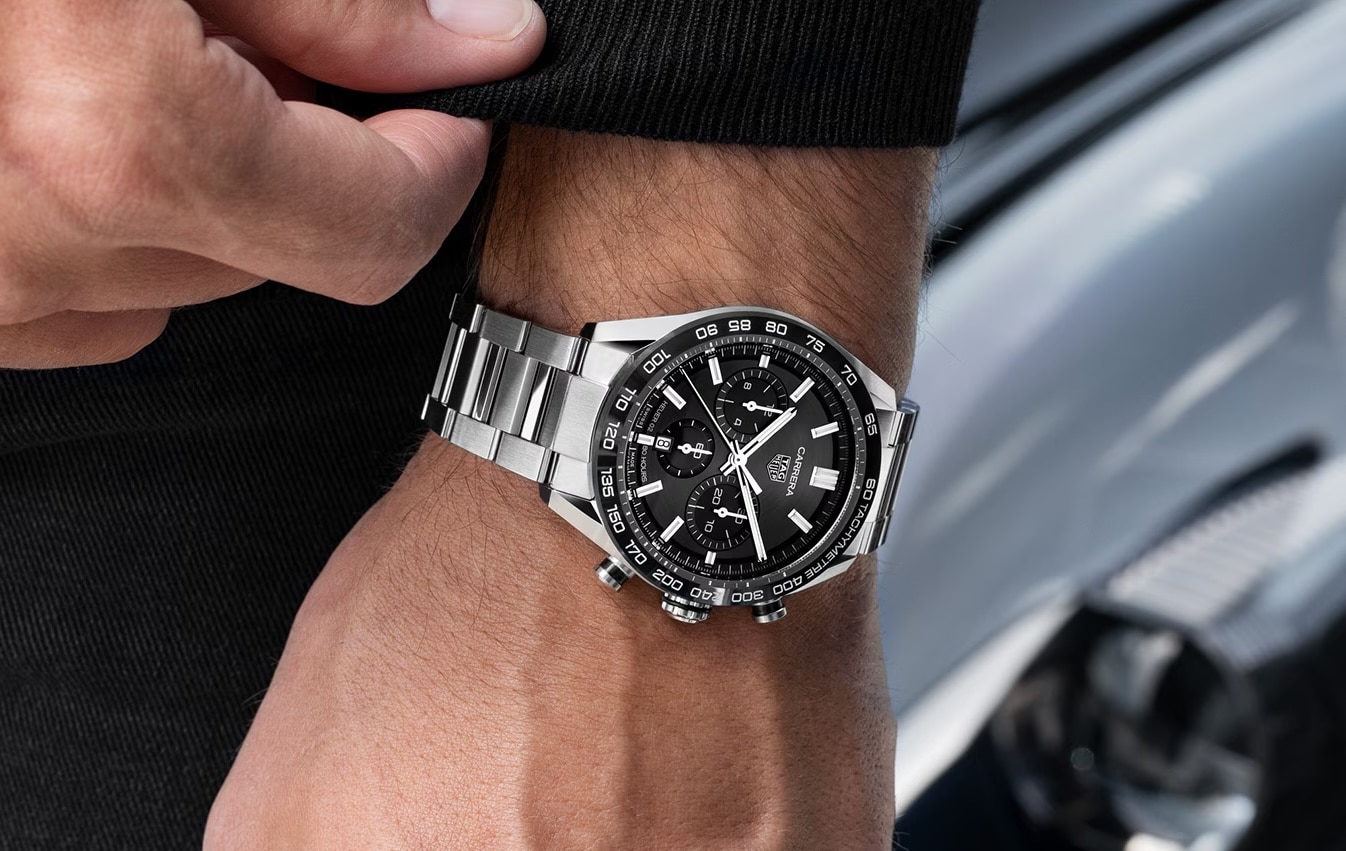
Rolex Daytona
Rolex Daytona represents more than just high-end watchmaking, as it embodies motorsport heritage alongside chronometric

Available on www.watches24.co.za
Breitling has long been a revered name in aviation watches, known for precision and reliability. Among its various models, the Breitling Emergency stands out not just for its technical prowess but for its unique capability to save lives. This article delves into the history and development of the Breitling Emergency, a watch equipped with a personal locator beacon, celebrating its 20th anniversary and highlighting its remarkable contributions to aviation and adventure.
Origins and Development
The story of the Breitling Emergency began with Ernest Schneider, who acquired Breitling in 1979. Schneider, an officer in the Swiss Army signal corps during World War II and a passionate pilot, was instrumental in steering Breitling through the quartz crisis by introducing new iconic models. In the mid-1980s, during a NATO conference, Schneider participated in discussions about emergency beacons and the frequent false activations that burdened rescue authorities. This conversation sparked the idea of integrating a personal locator beacon into a wristwatch.
Breitling partnered with Dassault Electronique to develop reliable beacon technology that could be compact enough to fit into a watch. After a decade of research and development, the Breitling Emergency was introduced in 1995.
The First Generation: Breitling Emergency
The initial Breitling Emergency featured a beacon that transmitted on the international distress frequency of 121.5MHz. This signal could be received up to 167km away and was highly directional, enabling precise location tracking by rescue authorities. Originally available only to licensed pilots, the watch later became available to the general public, provided they signed a document acknowledging their financial responsibility for rescue operations triggered by false alarms.
Between 1995 and 2010, Breitling sold 40,000 units of the Emergency, and according to the company, not a single false alarm was reported from these watches. The watch’s success in actual emergency situations, where it complemented official beacon systems, reinforced its reputation as a reliable safety tool.
Transition to the Breitling Emergency II
With the phasing out of the 121.5MHz frequency as the primary distress signal in 2009, Breitling needed to update its technology. The company aimed to create a new model that would be even more capable than its predecessor. Four years later, the Emergency II was released.
Enhanced Capabilities of the Emergency II
The Emergency II introduced dual frequency transmission, combining the original 121.5MHz homing signal with the digitally encoded 406MHz frequency. The 406MHz signal is monitored by the Cospas-Sarsat international search and rescue program, capable of being received by low-level satellites and ground antennae. This frequency offers fewer false alarms and a greater range but less accuracy compared to the 121.5MHz signal. The new transmitter required a larger battery, reflecting the technological advancements and increased capabilities of the watch.
The Emergency II is notable for being the first wristwatch to feature a dual frequency personal locator beacon. This required significant miniaturization of components, particularly impressive given that most personal locator beacons (PLBs) are much larger devices. The Emergency II can transmit within a temperature range of -20°C to 55°C for up to 24 hours and features a rechargeable lithium-ion battery system that operates independently of the watch movement. The charger also functions as a tester unit.
Technical Specifications and Design
The Breitling Emergency II is substantial, measuring 51mm in diameter and 21.6mm in height, but it remains relatively lightweight at 144g due to its anti-magnetic titanium construction. The watch is powered by the Swiss COSC-certified Caliber 76 SuperQuartz movement, offering both analogue and LCD digital displays. It includes various alarms and functions typical of modern digital watches. While it is water-resistant to 50m, it is not designed for deep-sea diving but is adequate for most users.
The watch is available with a black, yellow, or orange dial, and users can choose between a titanium Professional bracelet or a rubber Pro Diver III strap, depending on their preference.
Market Impact and Availability
The Breitling Emergency II has a significantly higher price point than the original, reflecting its advanced features. The Australian retail price is around $19,000, a notable increase from the original model’s cost. Despite the higher price, many adventurers and professionals consider it a valuable investment due to its life-saving capabilities. However, as of now, the watch has not yet received approval from Australian authorities, despite the country’s vast remote areas where such a device could be invaluable.
Conclusion
The Breitling Emergency and its successor, the Emergency II, represent remarkable achievements in watchmaking, combining advanced technology with practical applications for safety and rescue. These watches stand out not just as timepieces but as essential tools for pilots and adventurers. As the Breitling Emergency celebrates its 20th anniversary, its legacy as a lifesaving device and its unique place in horological history remain unparalleled.

𝐋𝐢𝐬𝐭 𝐘𝐨𝐮𝐫 𝐖𝐚𝐭𝐜𝐡 – 𝐂𝐫𝐞𝐚𝐭𝐞 𝐲𝐨𝐮𝐫 𝐝𝐞𝐬𝐭𝐢𝐧𝐲
Considering selling your exquisite luxury watch? At Watches 24, we provide the ideal platform for those looking to part ways with their timeless elegance and precision in second-hand luxury watches. Explore the possibilities with our curated collection, where your legendary timepiece can find a new home, defining someone else’s style and enhancing their presence.
𝐁𝐞𝐢𝐧𝐠 𝐨𝐧 𝐭𝐢𝐦𝐞, 𝐧𝐞𝐯𝐞𝐫 𝐠𝐨𝐞𝐬 𝐨𝐮𝐭 𝐨𝐟 𝐬𝐭𝐲𝐥𝐞
Let your legendary second-hand watch find its next chapter at Watches 24!
For selling inquiries, connect with us:
📞 Call: +27 83 406 6354
📧 Email: info@watches24.co.za
📧 Assistance: help@watches24.co.za
💻 Website: https://watches24.co.za

Rolex Daytona represents more than just high-end watchmaking, as it embodies motorsport heritage alongside chronometric

The Legacy Behind the Platinum Daytona The Rolex Daytona Cosmograph 126506 is one of the

The Racing Heritage Behind the TAG Heuer Carrera One of the most recognisable Swiss timepieces
Join our newsletter
And we’ll send you interesting information on a quarterly basis.
South Africa’s first fully authenticated luxury watch MARKETPLACE. We offer verified authenticity and secure trading for watch collectors and sellers. Shop from our growing collection of watches from dealers and private sellers.
About
Watches24 – Copyright All rights reserved 2022
Design by ip Webcraft
WhatsApp us